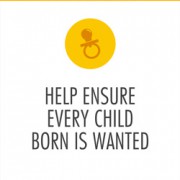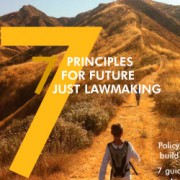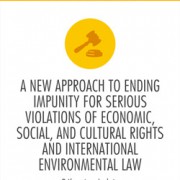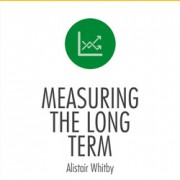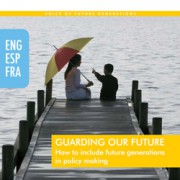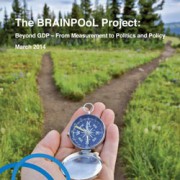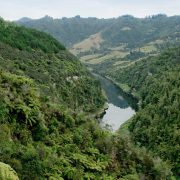Crimes against Future Generations
Actions which are so terrible that they put the very survival of life at risk or threaten the way of life of communities should be prohibited and prosecuted. When individuals act despite knowing the severe consequences of their acts or conduct on the long-term health, safety, or means of survival of human populations, they are committing what we call a crime against future generations.
We recognise crimes as:
Acts or threats of acts in the present that could cause serious widespread and long term harm to the health, safety or survival of future generations. These acts or threats may consist of individual, family, social, political, military, economic, cultural or scientific activities that:
• could cause widespread, long-term and severe damage to the natural or human environment, including the conditions of survival of an entire species, sub-species or ecosystem; or
• could gravely or irreparably imperil the health, means of survival or safety of a given human population.
Crimes against future generations would not be future crimes, nor crimes committed in the future. Rather, they would apply to acts or conduct undertaken in the present which seriously harm the natural environment, human populations, species or ecosystems in the present and which have consequences for the long-term.
Just as crimes against humanity are not crimes which are directly committed against humanity, crimes against future generations would also not be directly committed against future generations. The term “humanity” in crimes against humanity indicates that this crime concerns offences which are of concern to all of humanity, and that the gravity is such that when they are committed, all of humanity is injured and aggrieved. Crimes against future generations are similar, and arise where there is a connection, in terms of knowledge and causation, between the underlying offence and damage in the long-term.
Examples of Crimes Against Future Generations
Arctic Drilling
Arctic Drilling: an Early Warning
The Arctic ice cap first formed some three million years ago, and despite its remote location and harsh, inhospitable conditions it is home to some four million people and provides unique habitat for polar bears, seals, reindeer, amongst others. Over 40 indigenous languages are spoken in the Arctic; some languages are down to only one or two remaining speakers.1 It remains a unique, fragile and symbolic part of this planet.
The impacts of climate change are being felt most intensely in the Arctic and the region is changing rapidly – with dramatic consequences. The region holds the largest remaining untapped gas reserves and some of the largest undeveloped oil reserves (according to estimates, the region holds 13% of the world’s undiscovered oil reserves and 30% of the world’s undiscovered gas). Changing environmental conditions present opportunities for a grotesque carve up: the new, and perhaps final frontier for oil and gas. What most expected to be an environmental wake-up call, instead has become a promise of access and lure of profit.
Oil companies have yet to prove that they could responsibly clean up any potential oil spill in extreme conditions and yet exploration has already begun. Repeated failures and setbacks in recent months in this harshest of environments shows that drilling should not be happening here. Existing infrastructure is inadequate to respond to any emergency, and, since the Arctic features a short productive season, low temperatures, and limited sunlight, it can take much longer than would be expected for these regions to recover from habitat disruption, tundra disturbance and oil spills. Costly lessons from the past, including the Exxon Valdez spill in Alaska and the Deepwater Horizon spill in the Gulf of Mexico teach us that there is no safe way to drill for oil and gas in the Arctic, no way to guarantee wildlife will not be harmed by exploration and extraction and no way to ensure the Arctic will be protected for future generations. For what offers a supply of fuel for only a few years, environmental and social problems will remain long after the oil and gas has been extracted.
“I am haunted by the worry that an oil spill will occur in our waters. The animals would either disappear or be so contaminated that my children or grandchildren would be forced to decide which is less harmful to them: contaminated whale meat or processed food shipped up from someplace like Costco . . . I know that genocide is a harsh word, but that’s what it would be.” Caroline Cannon, longtime community activist and President of her local tribal council, The Iñupiats, giving evidence to a US House Subcommittee in 2011.
Communities already struggle to cope with changing conditions, threatening their survival on the very land that has been home to them for generations. Shipping patterns have begun to carve up the ocean. The Arctic faces an uncertain future of considerable magnitude.
Concerns are increasing that existing governance processes, legal frameworks and policies are insufficient to meet the needs of local communities and protect ecosystems for future generations. Intervention is required. The Arctic Council, not a legally recognised body is clearly not designed to deal with a corporate rush of this scale. Member States to the Council are accused of failing to offer a coherent policy or approach, as growing calls for the Arctic to be legally recognised as a no drill zone are being ignored.
Issuing an Early Warning. The threat of drilling in the Arctic presents such enormous risk that we do not need to wait for such a crime to be committed. We have a clear warning of the possibility of that crime, and we need to do all we can now to prevent it.
Read other examples of crimes against future generations: Bottom Trawling, Cultural Heritage Destruction, Denying Girls an Education, Nuclear Weapons, Casino Finance, Razing the Rainforest
Bottom Trawling
Bottom Trawling: Taking a Bulldozer to the Ocean Floor
Bottom trawling or dredging, describes the practice of fishing along the sea floor, using large, heavy, industrial scale steel plates or rollers. It often takes place in the high seas, located beyond the continental shelf of any country and lies beyond any national jurisdiction. These areas make up over half the areas of the Earth and are thought to host the highest biodiversity on the planet and yet most threatened, most vulnerable and least protected ecosystems on earth.
Since bottom trawling literally pulverises everything in its path, it has been shown to not only damage or destroy long-lived species such as corals and sponges, but also to harm the complexity of the seabed, reducing species diversity and faunal biomass.2 Given the slow growth rates of habitat-forming corals, which may take hundreds of years to develop, observations show that it is likely that such ecosystems will recover only very slowly if at all.3 In many areas, even many years after the cessation of fishing, there is no evidence of recovery.4 The impact has been compared to cutting down a rainforest: what has taken thousands of years to evolve, can be destroyed in a matter of moments, leaving behind a barren wasteland.
“There is a window in time, and that is now, when we could forever lose a precious ocean heritage, or we could develop the foundation for an enduring legacy, an ocean ethic…an inspired gift from the 20th century to all who follow us.” Dr. Sylvia Earle, Oceanographer
The world’s oceans are already facing immense strain as they are over-fished (a third of fisheries exploited beyond their limit, illegally fished, polluted, suffering acidification) in addition to other threats from climate change. Yet the international community continue to ignore existing conservation, management and regulation and fail to agree stronger, more responsible efforts to restore and protect these oceans. The public however, aware of the pending catastrophe to our oceans’ ecosystems are increasingly concerned for the future of the oceans and are calling for effective intervention.
In March 2013, a global survey found that 80% of respondents said governments should take the needs of future generations into account when deciding how to manage the high seas, and only 5% said they should not.
We know the risks. We should act now to prevent further deterioration, in line with the Future Justice Policy Principles. Bottom trawling threatens the environment, aggravates poverty and inequity, and violates precaution towards natural resources, ecosystems and human health. Absence of clear governance threatens human security and the natural world and the poor pay the price.
In our view, when individuals act despite knowing the threat from their acts to the survival and well-being of ecosystems and future generations – for example, from economic activities or from regulatory approval of such activities, which gravely or irreparably imperil the conditions of survival of a given ecosystem – this should constitute a crime against future generations.
Read other examples of crimes against future generations: Arctic Drilling, Cultural Heritage Destruction,Denying Girls an Education, Nuclear Weapons, Casino Finance, Razing the Rainforest
Destruction of Cultural Heritage
Destruction of Cultural Heritage – Amazonian Tribal People
Wiped out for standing in the way of progress
Before the DAY is over, an Indigenous homeland will be clear-cut, strip-mined, or flooded by a dam.
Before the WEEK is over, an Indigenous person will be killed or displaced, because of economic interests or simply because he or she has a different culture.
Before the YEAR is over, dozens of languages could disappear forever, taking with them ancient worldviews and a priceless record of earth’s biodiversity.
– Cultural Survival (www.culturalsurvival.org)
There are more than 150 million tribal people in over 60 countries around the globe. Their land rights are cemented in international law but are often not respected or protected in practice. The Awá are an Indian tribe in Brazil, some of whom still remain uncontacted. They are under an existential threat by loggers, settlers and ranchers who are invading their land and thus their only livelihood. These are one of the last nomadic Amazonian tribes in existence.
‘Every day as the white population by our reserve increases so do diseases like malaria and flu, and we have to share the game with the settlers. They have guns, so they kill more game than us. We are very worried about the lack of game and being able to feed our children in the future. Without the forest we’ll be gone, we’ll be extinct’. – To’o, an Awá tribes-man.
The uncontacted Indian tribes of Peru a further example. Peru has some of the world’s last commercially-viable mahogany forests, and illegal loggers, emboldened by lack of effective state control, have been exploiting these areas, the home of Peruvian tribes, at will.
Leaders of these countries have the power to stop this by sending in the federal police to restrain the loggers. This, however, is not happening. Making the destruction of Indigenous and cultural heritage a crime against future generations would add impetus and pressure on leaders to act. The crime of omission, of not acting, would also fall on national leaders since by failure to act they are allowing a crime against future generations to occur.
UN Declaration on the Rights of Indigenous Peoplesrecognises “the urgent need to respect and promote the inherent rights of Indigenous peoples which derive from their political, economic and social structures and from their cultures, spiritual traditions, histories and philosophies, especially their rights to their lands, territories and resources”.
UNESCO Universal Declaration on Cultural Diversityaffirms that ‘respect for the diversity of cultures, tolerance, dialogue and cooperation, in a climate of mutual trust and understanding are among the best guarantees of international peace and security’ as well as stating that cultural diversity is ‘the common heritage of humanity and should be recognized and affirmed for the benefit of present and future generations’.
Building on this existing legal and treaty framework, making cultural and Indigenous heritage destruction a crime against future generations would bring the above-mentioned declarations together and add another desperately needed layer of protection to the most vulnerable of minorities.
In our view, when individuals act despite knowing the that their actions could gravely or irreparably imperil the health, means of survival or safety of a given human population, – this should constitute a crime against future generations.
Read other examples of crimes against future generations: Arctic Drilling, Bottom Trawling, Denying Girls an Education, Nuclear Weapons, Casino Finance, Razing the Rainforest
Denying Girls an Education
Denying Girls an Education – guaranteeing a cycle of poverty for future generations
Everybody has the right to education, recognised since 1948 by the Universal Declaration of Human Rights (UDHR). The right to free and compulsory primary education, without discrimination and of good quality, has been reaffirmed in all major subsequent international human rights conventions. Yet in some parts of the world, girls are systematically denied access to education, which has significant and far reaching consequences.
Too often marriage is seen as a higher priority than education, and girls who are forced into marriage or are pregnant are taken out of school. Over 51 million girls under the age of 18 in countries in the Global South are forced to marry and in some places marriage of girls as young as seven to men ten times their age is commonplace.8 In 2005, the UNFPA predicted that over 100 million girls would become child brides by 2015 based on existing practices.9
There is often a powerful economic and social rationale for investing in the education of sons over daughters, as educated daughters are perceived to be less suitable for marriage, and less likely to abide by the will of the father, brother or husband. The perceived opportunity costs linked to sending girls to school are significant in poor households. Girls are frequently used to substitute for their mother, often expected to care for siblings. The loss of girls’ labour during school hours thus has a detrimental impact on such families’ ability to raise their household income, either through food production or wage labour.
A pervasive vicious cycle is in full swing. The limited number of female teachers in both primary and secondary schools is also a major constraint on girls’ education since their presence helps to make schools more girl-friendly, and provides them important role models. Some leaders struggle to recruit female teachers: often failing to ensure equal rights of women in teaching, failing to remove cultural prejudice against female teachers and failing to provide effective incentives to encourage female teachers to work.
Schools themselves can often fail to protect the basic rights and dignity of girls. Violence includes rape, sexual harassment, physical and psychological intimidation, teasing and threats. It may happen on the way to school or within the school itself, and can be perpetuated by teachers, parents, persons of perceived authority and fellow students. These conditions can encourage absenteeism and perpetuate cycles of discrimination and low self-esteem which education is supposed to break.
“An educated girl is less vulnerable to violence, less likely to marry and have children when still a child herself, and more likely to be literate and healthy into adulthood – as are her own children. Her earning power is increased and she is more likely to invest her income for the benefit of her family, community and country. It is not an exaggeration to say educating girls can save lives and transform futures.” Nigel Chapman, CEO, Plan International.
In our view, when individuals act despite knowing the threat from their acts to the survival and well-being of future generations and ecosystems – this should constitute a crime against future generations.
Read other examples of crimes against future generations: Arctic Drilling, Bottom Trawling, Cultural Heritage Destruction, Nuclear Weapons, Casino Finance, Razing the Rainforest
News Update, Jul 23 2014:
Three key steps to making schools safe in Nigeria
by Hafsat Abiola-Costello and Bjarte Reve
Nuclear Weapons
Nuclear Weapons “Hanging by the slenderest of threads”
“Today, every inhabitant of this planet must contemplate the day when this planet may no longer be habitable. Every man, woman and child lives under a nuclear sword of Damocles, hanging by the slenderest of threads, capable of being cut at any moment by accident or miscalculation or by madness. The weapons of war must be abolished before they abolish us.” – US President John F. Kennedy, Address Before the General Assembly of the United Nations, New York, September 25, 1961.
The United States Army conducted the first detonation of a nuclear device on July 16 1945 in the Jornada del Muerto desert in the state of New Mexico. Less than a month later, on August 6, an atomic bomb was detonated over Hiroshima, Japan, and a further nuclear bomb was dropped over Nagasaki on August 9. These two bombs combined killed around 120,000 instantly, while many more died of the long-term effects of radiation.
Although arsenals have been reduced after the end of the Cold War, more than 17,000 nuclear weapons still remain across the globe with an average explosive yield 20-30 times higher than that of the bomb dropped on Hiroshima. Roughly 10% of these warheads are maintained on hair-trigger alert, keeping humankind on the constant brink of nuclear war. The prolongation of this situation increases the probability of these weapons being used by accident, design or miscalculation.
There rests a legal obligation on nuclear-armed States to eliminate their arsenals, as derived from the 1968 Nuclear Non-Proliferation Treaty and customary international law. In its 1996 Advisory Opinion, the International Court of Justice unanimously proclaimed that “there exists an obligation to pursue in good faith and bring to a conclusion negotiations leadings to nuclear disarmament in all its aspects under strict and effective international control.” However, the nuclear-armed States have failed to implement their nuclear disarmament obligations and remain in violation of international law. Despite reductions to the overall number of nuclear weapons since the end of the Cold War, all of the world’s nuclear-armed states are modernizing their arsenals and continue to reaffirm importance of such weapons in their defence and security policies.
Nuclear weapons are a crime against future generations because they have the power to obliterate life on earth as we know it and cause unimaginable damage spanning many generations to come. Nuclear weapons must be abandoned in order to neutralize the existential threat they pose, so that future generations can enjoy their right to life, liberty and security.
In our view, when individuals act despite knowing the that their actions could gravely or irreparably imperil the health, means of survival or safety of a given human population, – this should constitute a crime against future generations.
Read other examples of crimes against future generations: Arctic Drilling, Bottom Trawling, Cultural Heritage Destruction, Denying Girls an Education, Casino Finance, Razing the Rainforest
News Update:
Casino Finance
Casino Finance: Gambling on our Future
Undermining the economic and social potential of future generations
When the state invests too little in public infrastructure – education, medical and social care, it is societal negligence that does not just affect current generations but negatively impacts societies for generations to come. Private companies step in and begin to increasingly provide these essential services, turning public services into business enterprises answerable to shareholders rather than the needs of the general public. The redistribution effects of austerity policies further exacerbate this economic crime.
The world is tied into a debt-based financial system where the only currency entering into circulation is through lending. Irresponsible lending caused the 2008 global financial crisis. Trade was conducted at much higher rates that the product’s intrinsic value (economic bubbles).15 When a sudden drop in these rates occurred, the bubbles ‘burst’ and the system crashed. Once this happened, governments lent even more money to bail out or recapitalise banks. This debt is being shouldered by current generations in the form of lack of investment in socio-environmental infrastructure through austerity measures and passed on to future generations who face huge amounts of compounded interest16 as well as the consequences of current lack in socio-environmental investment.17
“To keep interest rates low most central banks monetized that debt, injecting large sums of money into their economies – between December 2008 and December 2012 the global money supply increased by more than 31%.”18 Perhaps most frustratingly this debt was not even created to fix the root of the problem but simply to recapitalise the financial system that was the cause of the crisis.
The financial system took risks with people’s livelihoods without internalising any of the human consequences. A key example was the subprime mortgage industry, and the investment business derived from those mortgages. “Their suffering was invisible to those on the inside: it was so remote that for all practical purposes it did not exist.”19
“The mounting evidence of fraud, conflicts of interest, indifference to suffering, repudiation of responsibility, and systemic absence of individual moral judgment produced an administrative economic massacre of such proportion that it constitutes an economic crime against humanity.”20
The lack of regulation and oversight as well as shareholder pressure to deliver ever higher quarterly returns allowed the actions of a small minority to cause the suffering, loss of savings, housing, jobs, on a massive scale, precipitating spending cuts to all the services essential for thriving, equitable and sustainable societies. Selfish and greed driven actions has led to worsening poverty and sharpened inequality to brutal levels around the world21, as deprivation is exacerbated in pockets of society and the well-being of the lives of thousands in the future are threatened.
In our view, when individuals act despite knowing the threat from their acts to the survival and well-being of future generations and ecosystems – this should constitute a crime against future generations.
Read other examples of crimes against future generations: Arctic Drilling, Bottom Trawling, Cultural Heritage Destruction, Denying Girls an Education, Nuclear Weapons
Razing the Rainforest
Razing the Rainforest: a legacy of species extinction, violence, increased poverty, and lost livelihoods
- Tropical rainforests present some of the most biodiverse and biologically important areas on Earth. They are home to unique species of plant and animal and to some one billion people, who depend on the forests entirely for their livelihoods. They host the largest land-based plant systems for water and carbon cycles in the atmosphere and in the groundwater. Yet they are vulnerable to commercial logging and agriculture: the two largest influences on the rainforest, causing many thousands of acres to become either deforested or barren. The United Nations Food and Agriculture Organization (FAO) reports that approximately 7.3 million hectares of forests (an area roughly the size of Panama) are permanently lost every year. Today, just 12% of the Brazil’s original forest remains.
A significant, immediate effect of deforestation on this scale is the loss of valuable and unique plants and animals, leading to the potential extinction of many species. Many species are losing whole populations at such a rate that threatens their genetic variability and thus their ability to adapt to climate change and other forms of environmental adversity. Functioning ecosystems are wiped out. As a carbon storage system, the lost forests contribute to some 20-25% of global CO2 emissions through release of stored carbon dioxide. The loss of moisture from the forests reduces the production of rain clouds, leading to less regional rainfall, risking large scale desertification. Long term vicious cycles are unleashed. Further far reaching effects are only beginning to be understood.
For affected communities, for whom the forest is their life, deforestation brings violence, conflict and forced migration, often to nearby cities. Communities’ land rights often remain unclear or are blatantly violated. The biological, economic and cultural importance of their attachment to the land is often ignored by logging companies. In some recent commercial attempts to establish large scale oil palm plantations, communities cite a lack of transparency by the companies and illegal clearing of land despite their lack of consent22. Many express concern that their governments or regional authorities fail to defend their interests.
The large number of cases suggest that illegality, corruption and over-exploitation are endemic to the logging industry and their practices. To fill the gap of more widespread and stringent regulation, efforts to reform the logging industry include voluntary certification and marginal reforms, yet their success is often overestimated23. Even selective logging opens forests up to severe degradation, fire risk, illegal logging, and wildlife poaching, and makes the ultimate destruction of the forests more likely. In the Brazilian Amazon, for example, a third of the forest area that was “selectively” logged in 2000 was completely cleared by 200424. Products such as soy, maize, palm oil, rice and sugar are identified as key commodities driving large scale clearance of forests.
In our view, when individuals act despite knowing the threat from their acts to the survival of ecosystems – for example, from economic activities or from regulatory approval of such activities, which gravely or irreparably imperil the conditions of survival of a given ecosystem – this should constitute a crime against future generations.
Read other examples of crimes against future generations: Arctic Drilling, Bottom Trawling, Cultural Heritage Destruction, Denying Girls an Education, Nuclear Weapons, Casino Finance
The initiative of defining crimes against future generations grew from discussions held by the World Future Council Commission on Future Justice on the need to develop new laws and policies guaranteeing human security, ecological integrity, and social equity in the interest of future generations. The development of the concept and a definition of crimes against future generations for the International Criminal Court were commissioned to Sébastien Jodoin, Lead Counsel with the Centre for International Sustainable Development Law, CISDL. This process included expert workshops, consultations and meetings organised by the World Future Council and the Centre for International Sustainable Development Law with leading international judges and lawyers from 2007 to 2010. The resulting definition of crimes against future generations under international law builds upon a number of principles and developments in international law and policy on sustainable development, environment, human rights and international crime. The World Future Council also continues to work on the foundational level of the Future Justice agenda and seeks to influence the way we think and act by engaging with experts and advocates in international law and policy. A related academic book ‘Sustainable Development, International Criminal Justice, and Treaty Implementation’ on the links between sustainable development and international criminal law, with many contributors from all over the world, was published in August 2013.
Encouraging and inspirational initiatives related to the World Future Council’s crimes against future generations work are gaining traction around the world:
The One Justice Project (1JP) is a collaborative legal research and advocacy project seeking recognition of the most serious violations of economic, social, cultural, and environmental rights as crimes in global public opinion, international law, and domestic legal systems. It will campaign for changes in international and domestic law to provide individual criminal accountability for such violations as forced labour, corruption, discriminatory denials of access to basic levels of water, food, health, and education, and severe environmental harm and pollution.
Read here about the Ecocide campaign, an initiative working to introduce a proposed law against ecocide. Ecocide is the extensive damage to, destruction of or loss of ecosystem(s) of a given territory, whether by human agency or by other causes, to such an extent that peaceful enjoyment by the inhabitants of that territory has been or will be severely diminished.


